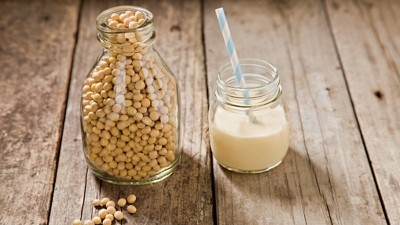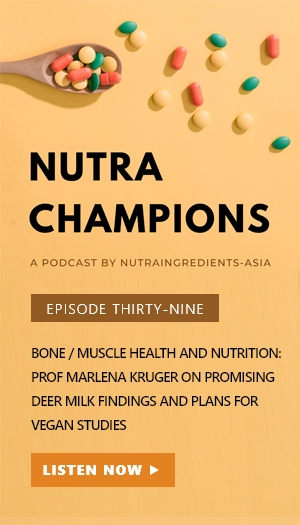Milking the benefits: How lactose ‘intolerance’ education can help tackle Asia’s diabetes, ageing challenges

This is according to an expert from dairy giant Friesland Campina who explains that for those who are lactase non-persistent (LNP), a gradual increase in lactose consumption can build up lactose tolerance, unlocking a host of health benefits that include prevention of type 2 diabetes.
Most Asians are assumed to be lactose intolerant, with many believing that they were simply ‘born this way’.
“The truth is every child born in this world can digest lactose. If you cannot digest lactose at that age, then you’d have a serious medical problem. It’s almost unheard of that any human would be born lactose intolerant,” said Dr Rolf Bos, Global Nutrition Development Director for Friesland Campina.
“However, for some people, somewhere between the ages four to eight, the lactase gene that can break down lactose is switched off. That is why they tend to experience gastrointestinal discomfort, such as abdominal bloating, when they consume milk.”
People from Caucasian backgrounds tend to be lactose persistent throughout their lives. But this is not the case for populations in other parts of the world, such as Africans, Asians and Latinos.
Increasing LNP dairy intake
This prompted Friesland Campina to co-fund a study where researchers conducted a 12-week before and after intervention trial on 25 LNP individuals of Asian ancestry, aged between 18 and 15.
The participants consumed gradually increasing lactose doses from 3 to 6 grams to 12 grams twice daily, each daily dose of 6 grams, 12 grams, or 24 grams being provided for four consecutive weeks.
They handed in repeated stool samples and underwent a 25-gram lactose challenge hydrogen breath test (HBT) before and after the 12-week intervention. Daily gastrointestinal symptoms and total symptom scores (TSSs) during the lactose challenge were recorded.
The study showed that by introducing lactose very slowly into the diet, people with LNP could eventually drink up to two glasses of milk a day, with mild to no gastrointestinal complaints.
“This is possible because the bacteria in your tummy can adapt and break down the lactose in the body, thus removing the gastrointestinal discomfort,” said Dr Bos.
When lactose is not digested, it produces gas, which is the cause of gastrointestinal discomforts such as bloating.
“Bifidobacteria metabolises, or, in layman’s terms, consumes lactose within the gut. Very young children are equipped with the ability to digest lactose because of the high levels of bifidobacteria in their gut,” Dr Bos explained.
“Lactose is like food for the bifidobacteria. The more food there is for the bifidobacteria, the more they will grow. When there are sufficient bifidobacteria in the gut, the body will then be able to metabolise lactose, thus eliminating the gastrointestinal discomfort that used to come with consuming lactose.
“You’re basically changing the microflora of your gut such that it can break down lactose, preventing symptoms of lactose intolerance.”
The firm believes this could have major implications for the health of Asian consumers, especially set against the backdrop of ageing societies.
“There is hardly any other food or drink that is as nutrient-rich as milk. It has all the elements that are relevant for people with all ages. This is especially crucial for older adults in their 50s and above. We think it will be beneficial for people to know the difference between lactase non-persistent and lactose intolerant, and not miss out on the benefits of consuming milk.”
What about diabetes and dairy?
In relation to diabetes, the relationship with milk intake remains ‘controversial’.
However, Dr Bos says that there is no clear evidence, nor any epidemiological data, that indicates milk causes diabetes.
“We must consider a person’s dietary intake as a whole, which includes both micro- and macro nutrients. This means looking at a balanced, nutrient-rich diet. The attention on fat content in cow’s milk is occasionally misunderstood. The mechanism of milk fat is not the same as other types of fat. There has also been many studies, including a very a recent summary of six large international studies, conducted on milk fat and findings reveal that milk fat has no negative impact on cardiovascular disease or diabetes,” explains Dr Bos.
In a second recent study, published in Nature Metabolism, academics analysed data from the Hispanic Community Health Study/Study of Latinos and found that in both sexes, higher milk intake was associated with lower risk of T2D LNP individuals.
They pointed out the threshold of lactose intake for symptoms to occur is much higher than generally acknowledged.
“It has been shown that most of the individuals with the LNP-genotype can still consume 12 grams (comparable with 250mL of milk) or more of lactose in a single dose without suffering from any GI (gastrointestinal) discomfort, especially when intake is combined with other foods.”
These researchers had also highlighted the benefits of consuming milk in relation to improvements in the microbiome.
“This observation can, at least in part, be explained by adaptation of the gut microbiota resulting from repetitive lactose intake. Repetitive lactose consumption supports the growth of lactose-digesting bacteria, such as bifidobacteria,” wrote the researchers.
For Friesland Campina, efforts to share the findings of these studies is ongoing.
The organisation holds webinars and conferences for healthcare professionals, whom they believe are in a credible position to pass the message to patients and consumers.
“Milk is a very good complement in our diet. It is a very nutrient-dense food that’s rich in high quality proteins, fats, vitamins and minerals. The mineral calcium is especially crucial for bone health. This is beneficial for the elderly because in old age, as appetite decreases, you’re going to need nutrient-rich food to make up for the lesser amount you eat, instead of consuming foods with empty calories,” said Dr Bos.
For those who would like to try incorporating lactose into their diet, Dr Bos advises to take it slow: “Start by introducing milk into your coffee or tea daily, gradually building up to half a pack of 200ml milk and then to a full pack of milk over a few weeks. The important thing is to take it slow, gradually increasing the amount of milk intake over time with consistency, while monitoring the gut’s response.”
Future research and key takeaways
Responding to questions about the sample size of 25 participants in the Netherlands study, and the fact that it was not conducted within Asia, Dr Bos expressed confidence in their research findings.
“The researchers decided on the sample size based on calculations on what we would require to come up with convincing evidence,” he said.
“And these people are of Asian origin,” he added.
We also asked whether we could extrapolate the findings of the diabetic study on Hispanics and Latinos to Asians, since there are significant lifestyle differences among these groups of people.
“Symptoms of lactose intolerance are also common among Hispanics and Latinos. As for lifestyle differences, they are always present even within any community. If we were to conduct a similar study in Asia, I’m pretty sure we will arrive at the same findings,” said Dr Bos.
Nevertheless, Dr Bos expressed interest to conducting future studies within Asian regions, such as in Singapore, for further research and to spread the message about the difference between lactose intolerance and LNP.
“With type 2 diabetes being so prevalent in Asia, I think these research findings are very important to this region. It is also crucial to change the perception that being LNP is something we cannot undo.”
References
Lonneke JanssenDuijghuijsen, Ellen Looijesteijn et al, Changes in gut microbiota and lactose intolerance symptoms before and after daily lactose supplementation in individuals with the lactase non-persistent genotype, The American Journal of Clinical Nutrition, DOI: https://doi.org/10.1016/j.ajcnut.2023.12.016
Kai Luo, Guo-Chong Chen et al, Variant of the lactase LCT gene explains association between milk intake and incident type 2 diabetes, Nature Metabolism, DOI: https://doi.org/10.1038/s42255-023-00961-1
We will be taking a closer look at Active Lifestyle Nutrition and Protein Trends in our Growth Asia Summit 2024 this coming July, which will feature insights from a wide range of industry leaders and experts. Don't miss out – register here today!












